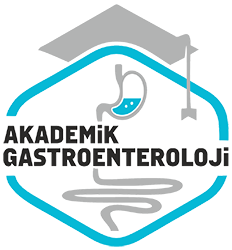Nisan 2023
Siyanoakrilat ilişkili pulmoner emboli; Olgu sunumu
Cyanoacrylate associated pulmonary embolism: A case report
- Ana Sayfa
- Sayılar
- Nisan 2023
- Siyanoakrilat ilişkili pulmoner emboli; Olgu sunumu...
Özet
Sirotik Hastaların %50’ye yakininda özofagus ve gastrik varisler gelisir. Varisli siroz Hastalarında dekompansasyon bulgusu olarak varis kanaması görülebilmektedir. Kanamalar sıklıkla özofageal varis kaynakli kanamalardir. Gastrik varisler daha nadir kanar; ancak daha ciddi ve mortalitesi yüksek kanamalara neden olurlar. Gastrik varisler özofagus varisleri ile karsilastirildiginda daha genis çapta ve submukozal alanda daha derine uzanim gösterebilirler. Bu nedenle özofagus varisleri için yapılan standart endoskopik tedaviler büyük oranda etkisizdir. Siyanoakrilat tedavisinde septik ve embolik komplikasyonlar görülebildigi bildirilmıştır. Olgumuzda akut gastrik varis kanaması ile basvuran siroz hastasında siyanoakrilat tedavisi sonrasi gelişen pulmoner emboli olgusu sunulmuştur.
Abstract
Up to 50% of cirrhotic patients develop esophageal and gastric varices. Varicose bleeding may develop as a sign of decompensation in patients with cirrhosis with varicose veins. Bleeding is often caused by esophageal varices. Gastric varices bleed less frequently, but they cause more serious and high-mortality bleeding. Compared to esophageal varices, gastric varices may extend more widely and deeper into the deep submucosal area. Therefore, standard endoscopic treatments for esophageal varices are largely ineffective. Septic and embolic complications have been reported from cyanoacrylate treatment. In our case, a case of pulmonary embolism that developed after cyanoacrylate treatment in a cirrhosis patient who presented with acute gastric variceal bleeding is presented



